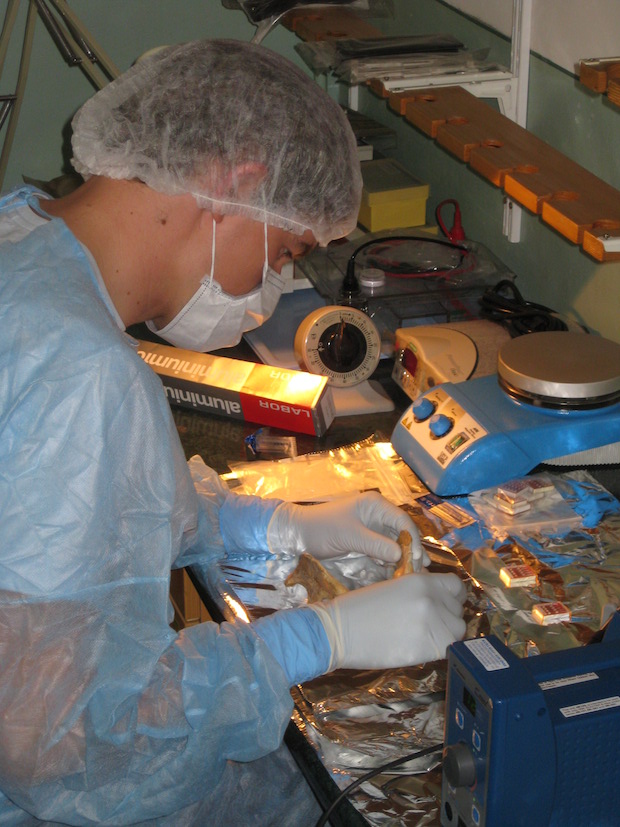Early human may have had a Neanderthal for a great-great-grandparent
It turns out early modern humans had even more Neanderthal DNA than previously thought.
In a study published Monday in Nature, Harvard Medical School's David Reich and his colleagues examined one of the oldest humans ever found in Europe and determined that his genome contained more Neanderthal DNA than any human previously studied - and at least three times more than what is found in present day humans.
"This individual had 6 to 9 percent of the genes from Neanderthals and that is a lot. That is about the size of a whole chromosome - one the 23 packets of DNA you get from your parents - and it would have effected biological traits," Reich, a professor of genetics, told CBS News. "It is about as much DNA as you get from a great-great-grandparent."
That means the specimen - known as Oase I, whose jaw bone was discovered in a cave in Oase, Romania and who lived between 37,000 years and 42,000 years ago - may have had a Neanderthal relative in their family tree as recently as four to six generations back.
The closest-known extinct relatives of modern humans were the Neanderthals, a shorter and stockier member of our lineage who lived in Europe and Asia starting around 300,000 years ago. Recent findings revealed that Neanderthals interbred with ancestors of modern humans when modern humans began spreading out of Africa between 40,000 to 80,000 years ago. Neanderthals disappeared around 40,000 years ago.
Svante Pääbo of the Max Planck Institute for Evolutionary Anthropology in Germany is among the pioneers in the field, having spent 16 years looking at this issue. Reich joined Pääbo's team in 2007 and they have since had a number of breakthroughs.
They demonstrated that humans living outside of Africa have much as 2 percent Neanderthal DNA. They also sequenced the genome of a Neanderthal in 2010 and showed last year in a Nature study that Neanderthal DNA in modern humans was associated with genes affecting type 2 diabetes, Crohn's disease, lupus, biliary cirrhosis, and smoking behavior.
Along with showing that Oase I had Neanderthal DNA, the latest study sheds light on where the interbreeding between the two ancestors may have taken place.
By examining Oase I genome, Reich and his colleagues were able to demonstrate the interbreeding was not limited to the first human ancestors to leave Africa or people in the Near East. It probably occurred later, they surmised, and probably happened in Europe and about 200 years before Oase I lived.
And because Oase I doesn't share more alleles - a variant of a gene - with later Europeans than he does with East Asians, Reich said it suggests that this was a "pioneer" population, which didn't mix with modern Europeans.
"If you try and understand how it is related to modern humans today, it doesn't bear a particular close relationship to modern day Europeans. It's actually slightly closer, if anything, to present day East Asians," Reich said.
"For us, that was a surprise and very interesting and exciting," he said. "This sample seems to be part of an initial pioneer population of modern humans in Europe that overlapped with Neanderthals, interbred with them and kind of died out and was replaced by other waves of movement from other places. Those people (in Europe) today are descended from this later wave."
The next step, Reich said, to further understand these interactions between early humans and Neanderthals by finding other specimens which "carry morphological traits suggestive of a mixture with Neanderthals."
